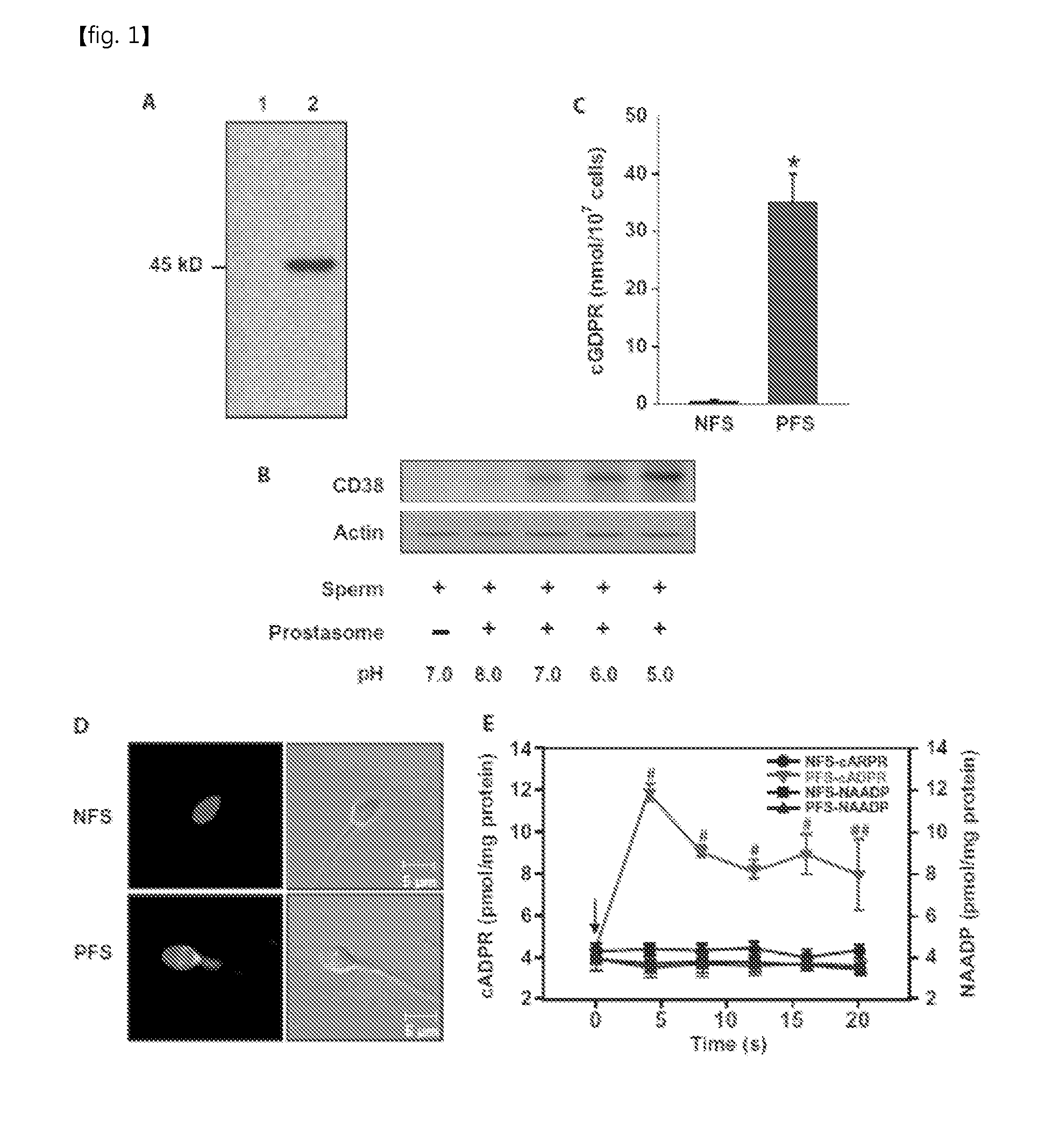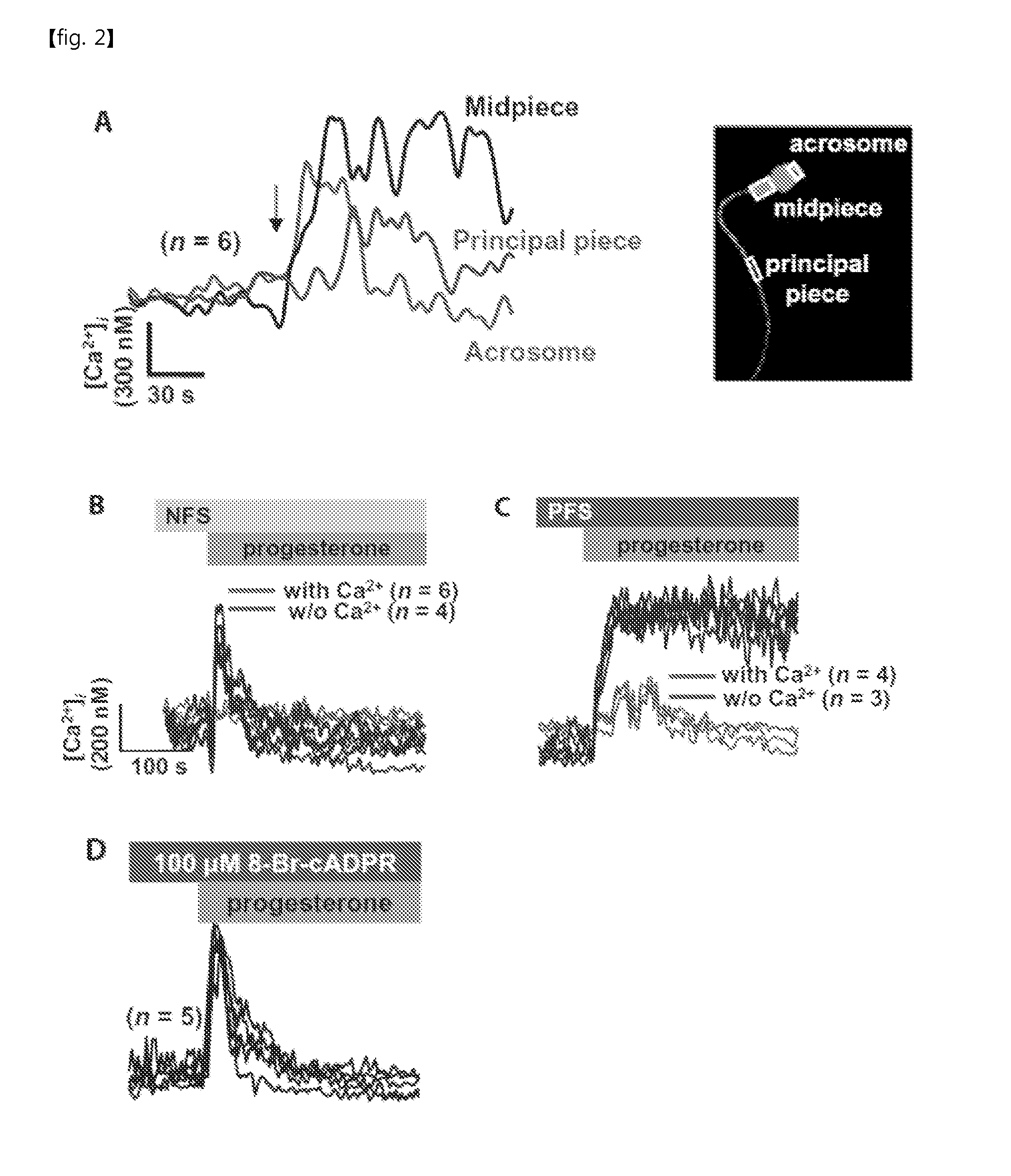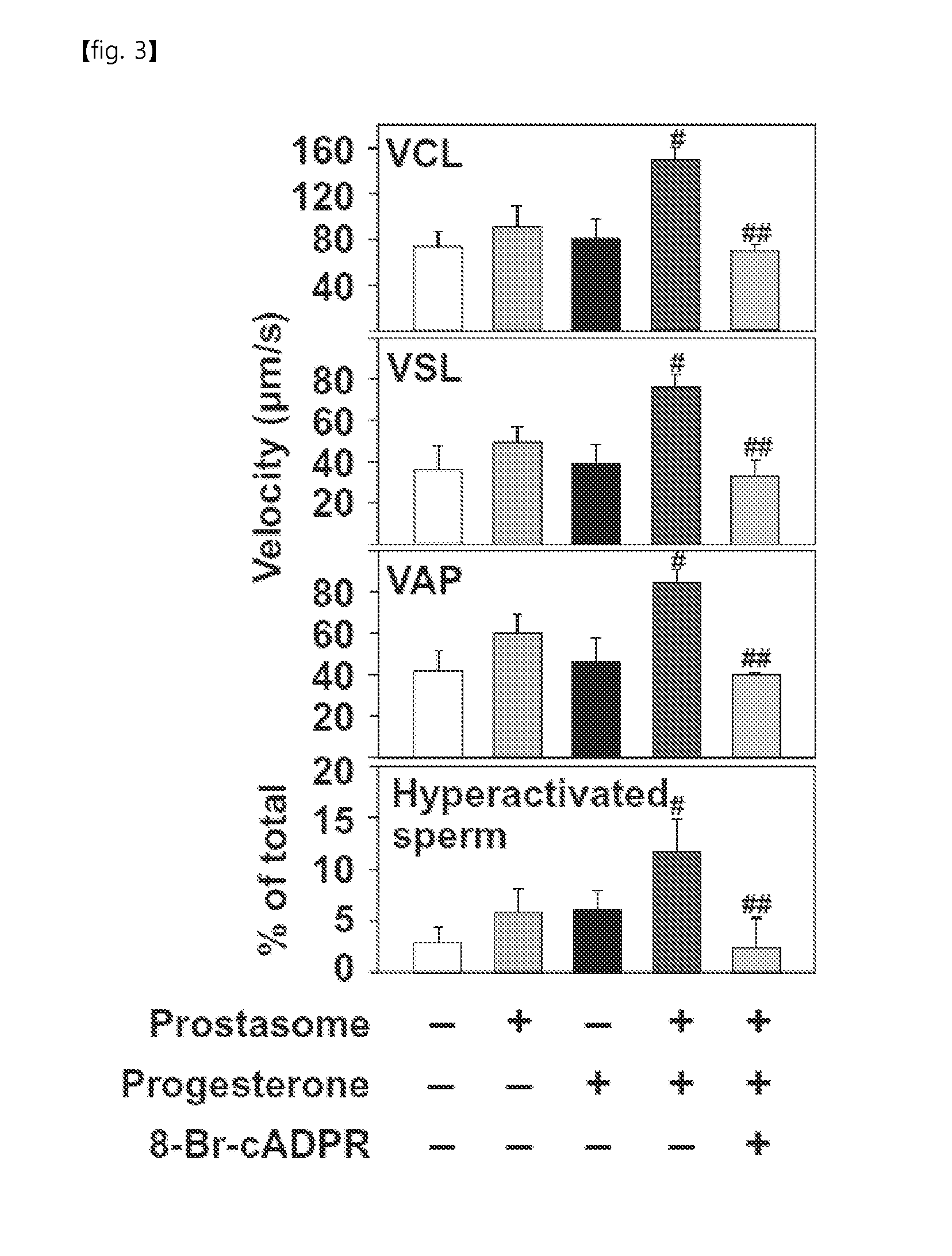Method of regulating fertilizing ability using cyclic adp-ribose and cd38
a technology of cd38 and adpribose, which is applied in the direction of drug compositions, biocides, peptide/protein ingredients, etc., can solve the problems of insufficient efficacy of several drugs for treating idiopathic asthenozoospermia, lack of scientific evidence of efficacy, and inability to fully confirm the efficacy of several studies, so as to improve the effect of sperm motility, regulating fertiliz
- Summary
- Abstract
- Description
- Claims
- Application Information
AI Technical Summary
Benefits of technology
Problems solved by technology
Method used
Image
Examples
example 1
Isolation of Protasome
[0042]The isolation of protasome was performed using a modification of the method of Palmerini et al. (Palmerini et al., Fertil. Steril. 80, 1181-1184 (2003)). The human semen was taken and 4-fold diluted with Tris buffered saline (TBS: 30 mM Tris, pH 7.4, 130 mM NaCl), and the dilution was centrifuged at 3,000 rpm for 30 minutes to collect the supernatant. The supernatant was centrifuged using a high-speed centrifuge (Beckman) at 15,000×g for 20 minutes, and then the supernatant was centrifuged using a ultra-high speed centrifuge at 105,000×g for 2 hours, and the precipitate was collected. The collected precipitate was resuspended in the same buffer, and a fraction which was first eluted using Sephadex G-200 (Sigma, USA) was taken, centrifuged and then suspended.
example 2
Isolation of Sperm
[0043]In order to isolate protasome-unbound sperm, ejaculated semen was immediately 20-fold diluted with 1% BSA-containing Bigger, Whitten, and Whittingham (BWW) medium (10 mM Hepes, 20 mM sodium lactate, 5 mM glucose, 0.25 mM sodium pyruvate, penicillin G (80 mg / liter), streptomycin sulfate (50 mg / liter), 95 mM NaCl, 4.8 mM KCl, 1.3 mM CaCl2, 1.2 mM KH2PO4, and 1.2 mM MgSO4 in 25 mM NaHCO3 buffer, pH 7.4] preheated to 37° C. The dilution was centrifuged at 900×g for 20 minutes, and the precipitate was washed twice with the same buffer.
example 3
Binding of Prostasome to Sperm
[0044]The isolated sperm were diluted with a weakly alkaline buffer or fusion buffer (150 mM NaCl, 1 mM CaCl2, 1 mM MgCl2, 5 mM glucose with either 2 mM Hepes (pH 8.0) or 20 mM MES (pH 5.0, fusion buffer)) containing 0.32 M sucrose. The dilution was mixed with prostasome such that the ratio of prostasome:sperm protein was 2:1. The mixture was allowed to react at 37° C. for 15 minutes. The reaction product was centrifuged at 600×g for 10 minutes, and the precipitate was collected, resuspended in BWW buffer and used in the experiment.
[0045]As a result, as can be seen in FIG. 1, the sperm had little or no ADP-ribosyl cyclase (hereinafter referred to as CD38), but the prostasome contained a large amount of CD38. The formation of cGDPR (the typical enzymatic activity of CD38) in the prostasome-unbound sperm and the prostasome-bound sperm was measured, and as a result, it could be seen that the prostasome-bound sperm had very high CD38 activity. Also, the bin...
PUM
| Property | Measurement | Unit |
|---|---|---|
| size | aaaaa | aaaaa |
| pH | aaaaa | aaaaa |
| pH | aaaaa | aaaaa |
Abstract
Description
Claims
Application Information
 Login to View More
Login to View More - R&D
- Intellectual Property
- Life Sciences
- Materials
- Tech Scout
- Unparalleled Data Quality
- Higher Quality Content
- 60% Fewer Hallucinations
Browse by: Latest US Patents, China's latest patents, Technical Efficacy Thesaurus, Application Domain, Technology Topic, Popular Technical Reports.
© 2025 PatSnap. All rights reserved.Legal|Privacy policy|Modern Slavery Act Transparency Statement|Sitemap|About US| Contact US: help@patsnap.com



